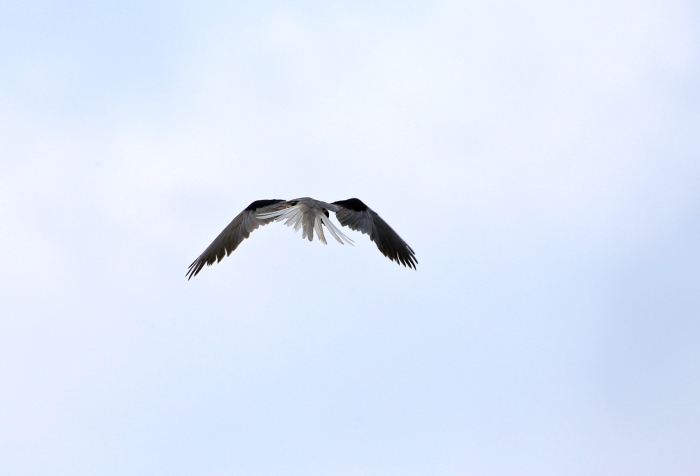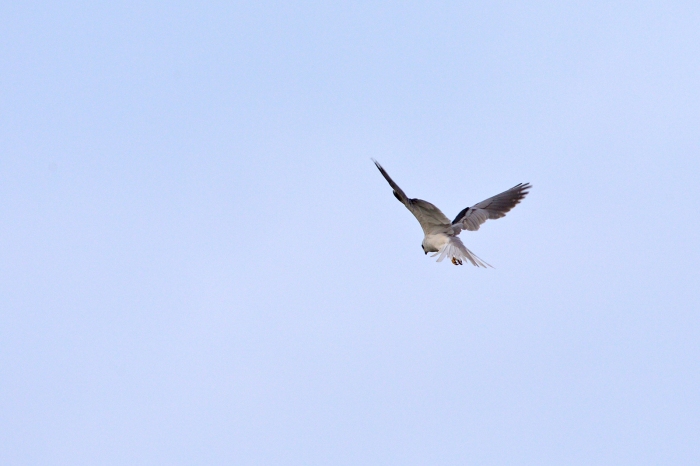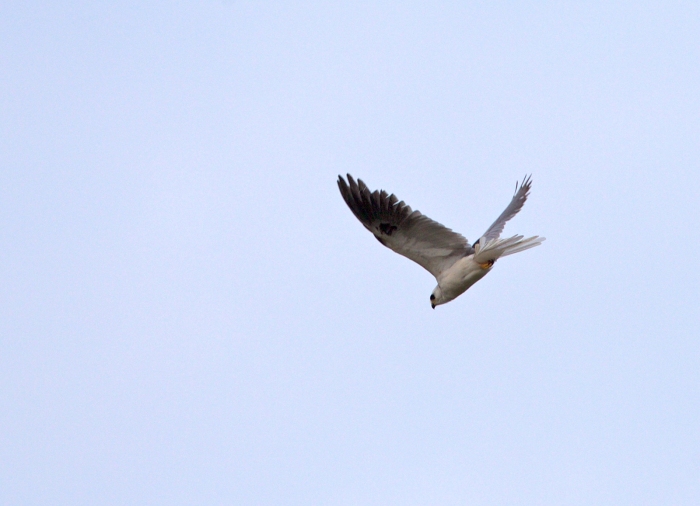Return of Bird of the Week: White-tailed Kite

White-tailed Kite, Darién Province, Panama
You can readily see why it is called a White-tailed Kite. The photo also shows those distinctive black shoulders, the two-toned tail and that very distinctive hovering posture. It’s a bit smaller than the other Kites, but still a decent-sized raptor, with a wing span of 42 inches.
The populations and even the range of this species has been on a roller-coaster the last 100 years. The species’ preferred habitat is open grasslands and savannah-like habitats. It has benefited somewhat from humankind’s conversion of forests to pasture, but suffered from the conversion of grasslands to monoculture agriculture. It was threatened with extinction in North America during the early twentieth century, but has recovered since then, expanding its range in the United States from small portions of California, Texas, and Florida. Breeding populations are moving up into Oregon and Washington and over half of Texas. At the same time, it has expanded its range southwards, as far as eastern Panama where these photos were taken.
Some North American populations declined during the 1980s and 1990s, however, apparently because of habitat loss and perhaps increased disturbance. Sincee then, there have been modest recoveries, especially in the southern parts of its range. As WC said, kind of a roller coaster.

White-tailed Kite, Darién Province, Panama
The species isn’t strongly migratory, wintering across much of its range. It may be that harsh winters contribute to the population changes. The species’ primary prey is microtines, small rodents, especially voles. To the extent a hard winter depresses that population, or makes it less accessible to the kites, the population would suffer.
A bit unusually for a raptor, White-tailed Kites are semi-communal nesters, constructing nests within a few tens of meters of each other. They are also communal roosters outside of breeding season, defending their territories until evening when the light gets low, and then in diminished light tolerating the higher density of the evening roost.

White-tailed Kite, Darién Province, Panama
For a bird that is conspicuous, hunts in open terrain and even hovers, there’s surprising gaps in our knowledge of this species. The dramatic population swings in some regions are especially concerning. And, yes, WC needs to get better photos of White-tailed Kites.
For more bird photographs, please visit Frozen Feather Images.